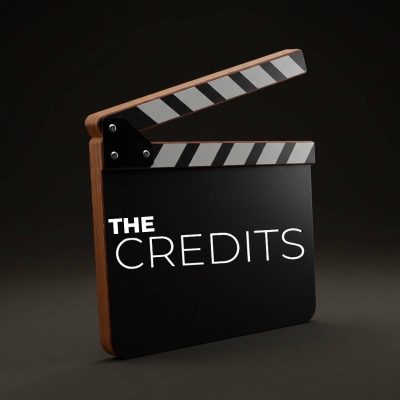Lessons Gleaned from Pixar Co-Founder Ed Catmull’s “Creativity, Inc.”
Ed Catmull knows a thing or two about how great stories are created. As the co-founder of Pixar Animation Studios and president of Pixar Animation and Disney Animation, Catmull’s garnered five Academy Awards in his long and quite literally storied career.
Catmull’s book, written with Amy Wallace, “Creativity, Inc.: Overcoming the Unseen Forces That Stand in the Way of True Inspiration,” should be a mandatory primer for anyone who oversees a group of creatives, as well as those in the business of making things for a living. It’s also a rare glimpse into the creative process of one of those most successful creative companies in the world, Pixar Animation, offering fascinating context to how brilliant films like Monster’s, Inc. and Toy Story 3 were created. These films, far from bursting from the heads of brilliant people (although they are whip smart) fully formed, “Creativity, Inc.” tracks the many blind alleys, dead ends, wrong turns and repeated failures that shaped these triumphs, making clear that any creative endeavor in which people are striving to make something great will be a bumpy road at best.
Here are a few choice points from the book on what Catmull has learned about the creative process from his years at Pixar. Film lovers, creatives, managers, and anybody interested in learning how great things are made will love this book.
On Honesty and Candor
Notes are an essential part of the filmmaking process. From the original story concept to the first draft of the script, from the actors performances to the editing bay, making a film is, in some ways, one long course in how to give and receive constructive criticism.
“A good note says what is wrong, what is missing, what isn’t clear, what makes no sense,” Catmull writes. “A good note is offered at a timely moment, not too late to fix the problem. A good note doesn’t make demands; it doesn’t even have to include a proposed fix. But if it does, that fix is offered only to illustrate a potential solution, not to prescribe an answer.”
Catmull quotes writer/director Andrew Stanton (Finding Nemo, Wall-E) who says, “There’s a difference between criticism and constructive criticism. With the latter, you’re constructing at the asme time you’re criticizing. You’re building as you’re breaking down, making new pieces to work with out of the stuff you’ve just ripped apart. That’s an art form in itself.”
Stanton’s method for giving notes is to try and make them inspiring. “Sometimes you talk about the problems in fifty different ways until you find that one sentence that you can see makes their eyes pop,” he says.
On Fear & Failure
Although their batting average is insane, Catmull points out Pixar has still had some pretty significant failure. He isn’t shy about pointing out Pixar’s flubs and mistakes, and that openness about failure, and viewing it not as shameful and embarrassing but instructive and valuable, is part of what has kept Pixar films consistently excellent, give or take a misstep here and there. One film was simply shut down, after three years of development, because the Pixar team could not figure out how to do it right. “I came to think of our meltdowns as a necessary part of doing our business, like investments in R&D, and I urged everyone at Pixar to see them the same way,” he writes.
Catmull writes passionately about the necessity of embracing failure, and the myriad ways in which we do everything we can to avoid it. Many of us associate failure with something shameful, and even those “enlightened” folks who claim to understand the value of failure, too often try to shunt it away or move quickly past it. Our association of failure and shame are so deeply rooted that we can only claim to see the value in it; deep down inside, we’re terrified to fail.
“We need to think differently about failure,” Catmull writes. “Mistakes aren’t a necessary evil. They aren’t evil at all. They are an inevitable consequence of doing something new (and, as such, should be seen as valueable; without them, we’d have no originality).” Catmull knows that even as crucial as embracing failure is, it’s still not enough. Failure is too painful. The key is to recognize “both the reality of the pain and the benefit of the resulting growth.”
So how does one use failure? It is not by accepting your failure gracefully and moving on. “The better, more subtle interpretation is that failure is a manifestation of learning and exploration,” Catmull writes. “If you aren’t experiencing failure, then you are making a far worse mistake: You are being driven by the desire to avoid it.”
The original visions for films as successful and critically acclaimed as Monsters, Inc. and Up are very, very different from what we all saw and loved. The former film was conceived as a story about a 30-something year old man who, upon seeing an old childhood book he had drawn of monsters, begins to see them in real life. The latter started out as a story about a floating castle and two dueling princes. Round after round of story sessions and total rewrites—failures, in a way—we were required until the films took their true shape.
At Pixar, failure is viewed as a unpleasant but utterly inescapable step in the creative process. Many companies who make mediocre products could likely pinpoint their middling output by the way they attach a negative definition to failure. “Ask yourself what happens when an error is discovered. Do people shut down and turn inward, instead of coming together to untangle the causes of problems that might be avoided going forward? Is the question being asked: Whose fault was this? If so, your culture is one that vilifies failure.” Catmull goes on to write that what happens in a fear-based, failure-averse culture is that the people responsible for creating the things the company relies on will avoid risk, “seek instead to repeat something safe thats’ been good enough in the past,” and churn out derivative work. “Management’s job is not to prevent risk but to build the ability to recover,” Catmull writes. Amen.



